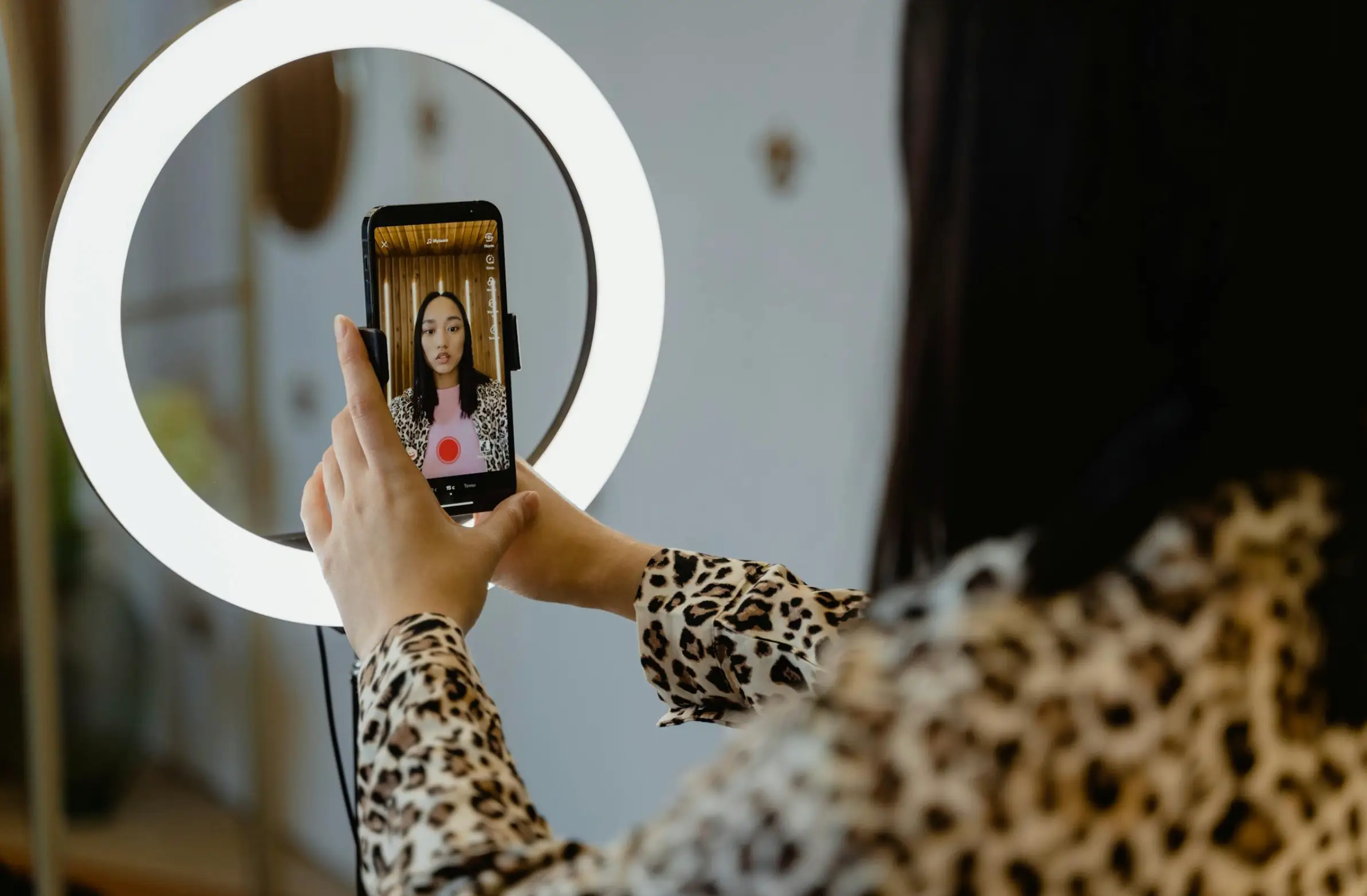The Success Story of Amazon: Jeff Bezos’ Vision That Changed the World
Updated on
Published on

In the early 1990s, the internet was still a mystery to most. People were only beginning to realize the potential of online services, and e-commerce was a small spec on the horizon. Around this time, Jeff Bezos saw an opportunity. Armed with the belief that online retail could become the next big thing, he left a well-paying job at a hedge fund to chase that idea. It was a risky move—one that family and friends watched with both curiosity and concern. Still, Bezos felt certain the web could shape retail in unimaginable ways. He began researching various products he could sell online, eventually zeroing in on books.
In 1994, he founded a company in his garage. He initially called it Cadabra, though it didn’t take long before it was rebranded as Amazon—a name chosen to reflect the wide-reaching and powerful Amazon River. Even in those early days, Bezos wanted his site to offer more than just a few products. He pictured an online store that could carry an endless assortment of items. This spark of ambition set the stage for the Amazon success we now know. It also marked the beginning of a Jeff Bezos success story that would inspire countless entrepreneurs to think bigger and aim higher.
Launch and the First Steps Online
When the newly named Amazon website launched in July 1995, it featured an online bookstore that aimed to deliver any title customers wanted, shipped right to their doors. The choice to start with books was practical. Books didn’t require complicated shipping solutions, and they appealed to a broad customer base. Bezos also saw that catalogs of books were extensive, making it a perfect product type to test the concept of an online retail store that could theoretically hold “infinite” inventory.
Despite these advantages, the early Amazon story was still full of uncertainty. Bezos had to win over skeptics who questioned whether people would trust the internet enough to buy books—or anything else—online. He poured resources into an intuitive website design and a customer-centric philosophy that focused on making the shopping experience simple and reliable. This dedication began paying off as customers enjoyed the convenience of finding rare or out-of-print books without leaving their homes. Within the first few months, Amazon was shipping orders to every state in the U.S. and dozens of countries around the world. This initial success showed the rise of Amazon was more than just hype; it was tapping into genuine consumer demand.

Expanding Beyond Books
After proving that customers were more than willing to purchase books online, Amazon started branching out. In the late 1990s and early 2000s, the company added music CDs, DVDs, video games, and even electronics to its catalog. Each time the selection grew, the brand’s popularity soared further. Amazon’s strategy was to keep refining its fulfillment systems, so no matter how many products it added, customers could still trust that items would arrive on time. This relentless push to improve logistics and shipping times became a hallmark of Amazon success.
Meanwhile, other online retailers started to emerge, but few could keep up with the speed at which the rise of Amazon was unfolding. Rather than resting on their achievements, the company kept looking for fresh ways to expand. For instance, they launched their own marketplace platform, allowing third-party sellers to list products on Amazon’s website. This move dramatically widened Amazon’s inventory range while bringing in additional revenue from fees charged to these outside vendors. The concept was simple but effective: if a customer wanted it, Amazon wanted to sell it or make it available on the platform. That principle transformed the company from a mere online bookstore into a global marketplace capable of connecting countless buyers and sellers.
Jeff Bezos’ Vision and Leadership Style
At the core of Amazon’s story is the leadership approach of Jeff Bezos. From the beginning, he championed a long-term perspective. Instead of chasing quick profits, he reinvested nearly every dollar back into the company. That meant spending heavily on technology infrastructure, warehouses, and new product categories. While critics questioned whether this model was sustainable, Bezos held firm to the notion that long-term growth and customer satisfaction were paramount.
He also insisted on specific management principles that continue to define Jeff Bezos’ success story. One notable example is the “two-pizza team” rule: no team should be so large that two pizzas can’t feed everyone on it. This idea encouraged small, agile teams that could make quick decisions. Another aspect was the relentless drive to be “customer-obsessed,” leading to innovations like personalized recommendations, user-friendly phttps://quartr.com/insights/company-research/amazon-from-books-to-everything product pages, and, later on, services like Prime. By centering decisions around what would delight customers, Amazon effectively built a loyal base that returned time and again. Bezos’ emphasis on big thinking, customer focus, and long-range planning formed the backbone of the Amazon success we see today.
The Birth of Amazon Prime and Further Growth
While Amazon had already established a global presence in retail, the introduction of Amazon Prime in 2005 took the company to new heights. For an annual subscription fee, Prime members gained access to free two-day shipping on millions of items. This might not sound revolutionary today, but at the time, it changed how people shopped. Suddenly, online orders could arrive nearly as fast as a trip to the store—minus the driving, crowds, and time lost in traffic.
Prime also laid the groundwork for additional benefits like streaming video, music, and eBooks. Each new perk kept customers locked into the Amazon ecosystem. It wasn’t just about shipping anymore; it was about building a full-service online environment where entertainment and convenience coexisted. This approach accelerated the rise of Amazon because Prime members tended to buy more often and spend more. As membership grew, Amazon poured more money into expanding warehouse networks, updating delivery technologies, and exploring innovative shipping methods like drones. The brand’s commitment to speeding up and broadening the service made Prime a key pillar of the Amazon success formula.
Diversification into Tech and Cloud Services
While Amazon’s massive retail arm often grabs headlines, another crucial part of its success lies behind the scenes: Amazon Web Services (AWS). Launched in 2006, AWS began as an experiment to offer cloud computing services, letting businesses rent server space and computing power instead of hosting everything in-house. This idea stemmed from Amazon’s need to manage its own giant online infrastructure; once they developed these resources for internal use, they saw an opportunity to rent the same tools to other companies.
Today, AWS is a significant revenue driver and a cornerstone of the Amazon story. It powers everything from startup apps to massive online platforms for Fortune 500 companies. By offering scalable, pay-as-you-go cloud services, AWS revolutionized the tech industry. It also made Amazon less reliant on retail sales alone, giving it a powerful foothold in the ever-expanding digital economy. From data storage and machine learning to virtual servers and content delivery, AWS has turned Amazon into a technology heavyweight. This diversification underscores Jeff Bezos’ success story: he continuously scanned the horizon for new business models that could shape the future, then invested time and money to make them a reality.

Emphasis on Innovation and Customer Experience
One reason the rise of Amazon resonates worldwide is the company’s consistent focus on innovation. Over the years, Amazon has introduced products and services that have reshaped how people interact with technology. From the Kindle e-reader that revolutionized the publishing industry to smart home devices like Echo and Alexa, Amazon aims to simplify everyday tasks. The Kindle showed publishers and consumers that eBooks could be a viable alternative to physical copies, while Alexa integrated voice commands into daily life, letting users play music, set reminders, and shop—all by speaking to a device on a kitchen counter.
Yet, innovation at Amazon isn’t only about launching flashy gadgets. It’s also about rethinking processes, logistics, and the overall user experience. One example is the push toward one-day or same-day shipping in select regions. Achieving that speed demands intricate coordination between warehouses, couriers, and real-time tracking systems. Another is the frictionless checkout options offered in physical Amazon Go stores, which use sensors to detect items picked off shelves—there’s no checkout line at all. These steps reinforce the brand’s “customer-obsessed” DNA, ensuring that any new idea, big or small, aligns with making the shopping or service experience more enjoyable and efficient.
Challenges and Criticisms Along the Way
No monumental story goes without its complications. As Amazon expanded, it faced criticism and concerns in areas like employee working conditions, aggressive business practices, and environmental impact. Reports have surfaced about high-pressure environments in warehouses, where workers are pushed to meet strict performance metrics. Competitors and market analysts have raised questions about whether Amazon’s pricing strategies and acquisition moves stifle competition. Additionally, with millions of packages shipped daily, some wonder about the global environmental cost of such a colossal e-commerce operation.
Amazon has addressed some of these critiques by implementing wage increases, investing in renewable energy, and offering programs aimed at helping small businesses sell on the platform. These efforts haven’t erased all concerns, but they do indicate that the company is aware of its influence and the responsibilities that come with it. Despite the bumps in the road, the overall trajectory of the Amazon story remains positive, continuing to showcase how rapid growth can coexist with evolving social expectations.
The Jeff Bezos Success Story Beyond Retail
For many, Jeff Bezos embodies the modern entrepreneur. His decision to leave a successful career in finance and pursue an uncertain online bookstore laid the groundwork for an empire. Over the years, Bezos has expanded his interests to include space exploration with Blue Origin, which seeks to lower the cost of access to space. This move reveals a willingness to look beyond even the most ambitious e-commerce goals, aiming instead to reshape humanity’s relationship with technology and innovation.
His leadership style, often intense and demanding, has prompted both praise and concern. But whether people agree with it or not, there’s no denying that his approach has left a profound imprint on global business. He stepped down as Amazon’s CEO in 2021, handing the reins to Andy Jassy, but the Jeff Bezos success story continues in new projects and philanthropic efforts like the Bezos Earth Fund. His journey shows how a single vision—selling books online—can spiral into something that changes entire industries.

The Future of Amazon Success
While nobody can predict every twist and turn in the tech world, it’s clear that the rise of Amazon shows no signs of slowing. The company has grown well beyond its origins, stepping into fields like streaming services, grocery shopping (via Whole Foods), personal electronics, and beyond. As consumer habits shift, Amazon adapts with new subscription models, localized logistics, and expansions into international markets that still have plenty of room for e-commerce growth.
Meanwhile, Amazon Web Services keeps driving the company’s bottom line, ensuring it has the capital to keep exploring new ventures. Whether through more advanced AI assistants, expansions in telehealth, or further steps into financial services, Amazon’s ability to reinvent itself—and meet evolving consumer demands—seems almost boundless. The brand’s combination of resourcefulness and relentless experimentation will likely keep it at the forefront of global commerce and technology.
Lessons from the Amazon Story
The Amazon story is packed with lessons for anyone starting or running a business. First and foremost, it emphasizes the importance of a long-term viewpoint. By choosing to reinvest profits and maintain low margins initially, Amazon built a powerful foundation that allowed it to weather competition and economic fluctuations. Second, it illustrates how putting customers first can spark repeat business, word-of-mouth promotion, and brand loyalty. Finally, it’s a reminder that risk-taking and willingness to venture into uncharted territory often pay off—though not without setbacks along the way.
Jeff Bezos’ success story underscores that big ideas can arise from relatively simple beginnings. His decision to focus on selling books online could have fizzled if he wasn’t ready to pivot, diversify, and continually innovate. Instead, it became the seed of a multinational conglomerate worth hundreds of billions of dollars. For startups, small businesses, or even large corporations looking to evolve, Amazon’s trajectory proves that staying adaptable is crucial in a rapidly changing market.
Reflecting on an Ever-Evolving Journey
As the e-commerce landscape and consumer behaviors continue to transform, Amazon success stands as one of the definitive examples of what happens when vision, execution, and timing align. The company started in a garage, powered by a belief in the untapped potential of online retail. From that humble origin, it grew into a juggernaut influencing industries as diverse as entertainment, logistics, and cloud computing. Meanwhile, Jeff Bezos emerged as a symbol of modern entrepreneurship, inspiring debates on leadership, corporate responsibility, and the very nature of innovation.
Though Amazon isn’t without controversies, it’s hard to deny the significance of its impact on global shopping habits. Customers worldwide now expect fast shipping and extensive variety as a standard part of the online experience—an expectation largely shaped by Amazon’s relentless pursuit of bigger, better, and faster services. As the brand explores new corners of the consumer and tech worlds, it continues to rewrite the rules of what a company can achieve. If nothing else, the rise of Amazon has shown that sometimes, the simplest ideas—like delivering books via the internet—can pave the way for a revolution in how people live, work, and shop.







